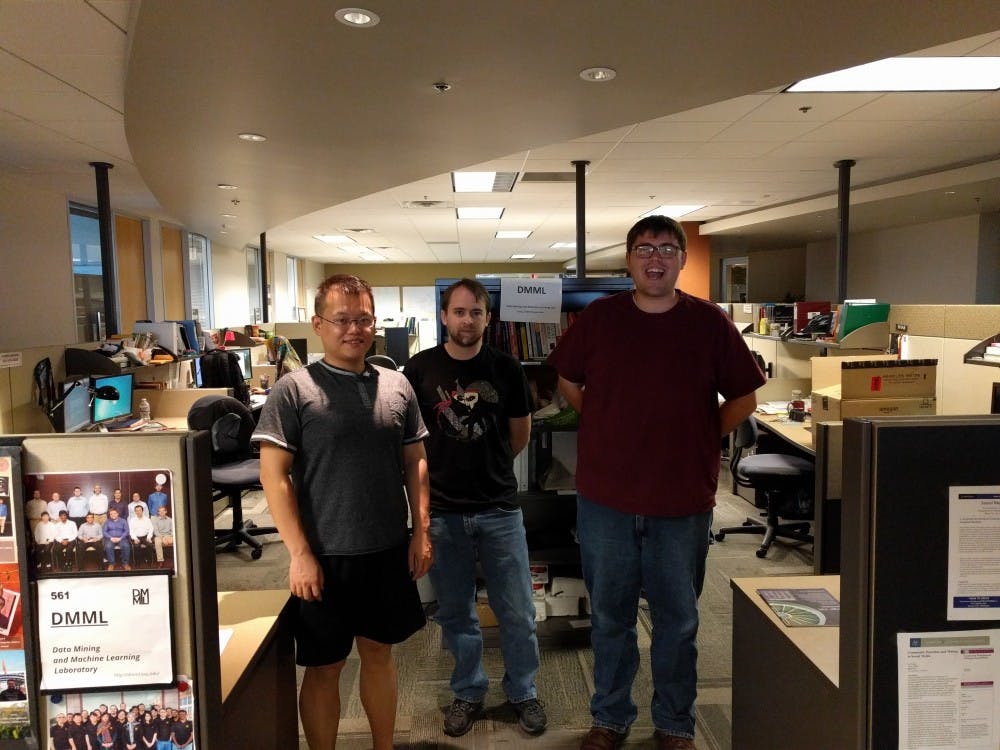For those who are curious, or still unsure, Pope Francis did not endorse president-elect Donald Trump, nor has Bill Clinton been accused of raping a 13 year-old. These are two stories that circulated among prominent social media outlets leading up to the election, and they are absolutely false.
But where do these stories come from?
"These are fake sites, or rather real sites pretending to be news agencies, and pretending to be pushing out something that is totally legit," ASU computer science doctoral student Fred Morstatter said.
Morstatter and his colleagues Liang Wu and Justin Sampson specialize in "misinformation deriving from social media," he said.
Websites like the ones responsible for the stories above developed as a reaction to a decision that Facebook made last May.
"It used to be, until a few months ago, that the Facebook trend thing on the right used to be curated by journalists," Morstatter said.
Morstatter is referring to an incident this past summer, when a Facebook trending news editor admitted to Gizmodo that the curators tended to remove more conservative content from the Facebook news feed. Public outrage prompted the company to fire all of the trending news employees and replace them with an algorithm.
"I think Facebook's move was way too drastic," said Morstatter. "They could have had a much lighter handed approach where they start to implement these algorithms but keep the journalists around to make sure that it's not all junk."
"I think Facebook's move was way too drastic."
Because Facebook tends to keep its algorithms secret, it's difficult to say whether the Silicon Valley giant should try to improve upon the existing formula, or simply return to the days of human curators.
"For these algorithms, they don't publish how they work, but we know from how other people do it that it's usually based on frequency," Morstatter said.
Fake news outlets have come to realize that they can influence Facebook's users just by virtue of getting them to click on their articles.
"A lot of research shows that just because you detect a rumor and tell people that it's not true, does not necessarily mean that it will not spread," Sampson said. "The best thing is really just for people to be informed that these (fake stories) exist."
So far that has not been the case. Certain polls indicate that 44 percent of adults in the U.S. get their news from Facebook, and until the end of August, the issue had not garnered significant media attention.
Morstatter said that Facebook's intentions are part of the problem.
"You have to remember, what does Facebook care about?" he said. "They care about you being on Facebook, you sharing on Facebook, you interacting on their site. So to that end, they just want to show you the thing that will keep you there. They don't necessarily want to educate you."
As a result, those who log into Facebook are bombarded with stories and perspectives that coincide with their own. In trying to keep its users satisfied, Facebook has created a sort of echo chamber.
"On Facebook, people who have similar beliefs group together," Liang Wu said. "Facebook asks people to do that with groups, so they build an echo chamber."
With the election done with, some have pointed fingers at social media CEOs. However, wary of returning to Facebook's liberal-leaning past, Mark Zuckerberg has been hesitant to push for widespread change in the trending algorithms, claiming that only about 1 percent of Facebook's news is fake.
Unfortunately, all the data that would corroborate that claim is unavailable to the public. In order for people to figure out what is and is not fake, they'll have to do some investigating of their own.
Sampson noted that this may be even more difficult than it sounds.
"When you have a news website, and it only has a single article on it, it doesn't take that much for a human to look at it and actually say, 'This can't possibly be real'," Justin Sampson said. "The problem is that most people's use of social media hasn't really matured, so people see things, and they share them not even thinking about it."
Reach the reporter at sdeadric@asu.edu or follow @deadrick_sam on Twitter.
Like The State Press on Facebook and follow @statepress on Twitter.




